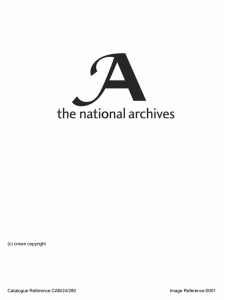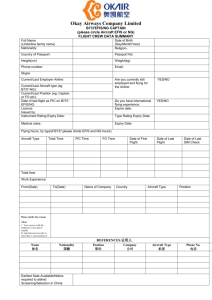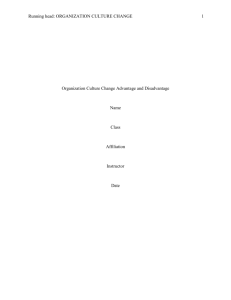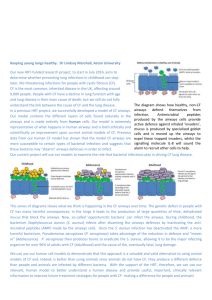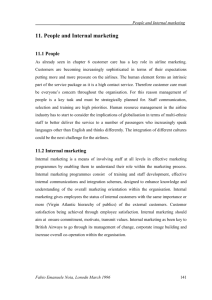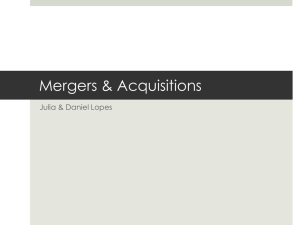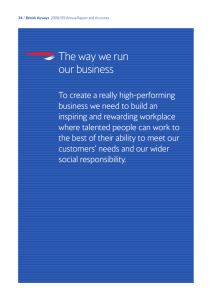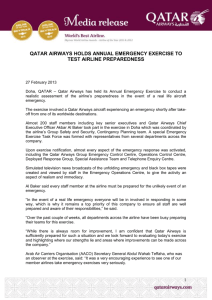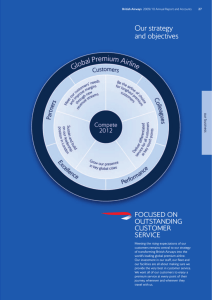Britni_Britishairways_S07_S1
advertisement
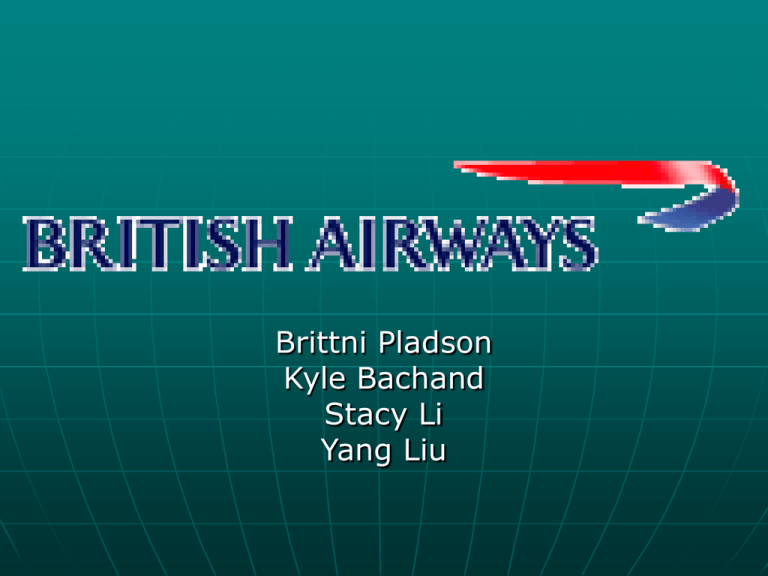
Brittni Pladson Kyle Bachand Stacy Li Yang Liu Introduction – Brittni History – Yang SWOT Analysis – Kyle Competition – Stacy Industry Analysis – Brittni Recommendations/Conclusion – Kyle History The History of British Airways The Status Quo of British Airways The Further Plan of British Airways The History of British Airways In 1919, the international In 1952, the In 1976, the first scheduled passenger service first jet service first supersonic service The Status Quo of British Airways Subsidiary Company One world Partnership Hubs: London Heathrow Airport Gatwick Manchester International Airport The Further Plan of British Airways The fleet size is 253, including 19 flights in ordering. New purchase to expand the longhaul fleet. The Struggles in Operation British Airways Ethnic Liveries British Airways Cross Controversy Child Protection Policy British Airways should pay more attention to being considerate before carrying out any policy. SWOT Analysis Strengths Industry Leader Customer Service One World Alliance Business Segments Network Airline Regional Airline Non-airline Weaknesses #3 among European Airlines Fleet Boeing instead of British manufacturing Opportunities Alliances More routes covering more destinations in more countries Fleet Threats New Entrants Power of Supplies Power of Buyers Availability of Substitutes Competitive Rivalry Main Competitors Virgin Atlantic Airways United Airlines Air France-KLM Virgin Atlantic Airways The most primary hostile domestic competitor Purpose: breaking the monopoly of British Airways, becoming the largest airlines company in UK. Greatly improved the quality of Economic Class British Airways vs. Virgin Atlantic Passengers Carried: 35.5 million vs. 4.0 million Counties covered: 73 vs. 18 Number of aircraft: 234 vs. 43 2006 Revenue: $14.8 billion vs. $1.91 billion United Airlines World's 2nd-largest airline by revenue-passenger-kilometers World’s 3rd-largest by total operating revenues World’s 4th-largest by total passengers transported Air France-KLM World’s the largest airline company by total operating revenues World’s the 3rd-largest airline company by passengers-kilometers the most profitable company in Europe COMPETITION AMONG BA,UA AND AF-KLM C h art 4. C o m p aris o n 1 (2006) 554 600 500 400 300 460 442 369 228 234 222 210 225 BA 200 UA L 100 A F-K LM 0 R anking by Fortune 500 A ircraft D estinations COMPETITION AMONG BA,UA AND AF-KLM C hart 5.C om parison 2 (2006) 1110.8 P rofits(m illion U S D ) 0 804.5 26099 17379 15189 R evenues(m illion U SD ) AF-K LM U AL 102422 56861 49957 E m ployees 0 20000 40000 60000 80000 100000 120000 BA Strengths of UA and AF-KLM Larger scale Creating and occupying new markets at the first time. Esp. China market focusing on high cost-performance WHAT DOES BA DO? Cutting down the costs Laying off the people Cooperating with Google Earth Creating a brand new supereconomic class The Airline Industry “Intensely Competitive Market” Ownership DOT Classification International National Regional Cargo Issues with the industry Physical cost of planes Weather Fuel costs: 14-16% of total costs Labor: 40% of total costs Intense competition Recommendations/Conclusion Merger/Alliances Safety/Security Comfort Incentives Frequent flier miles QUESTIONS?
